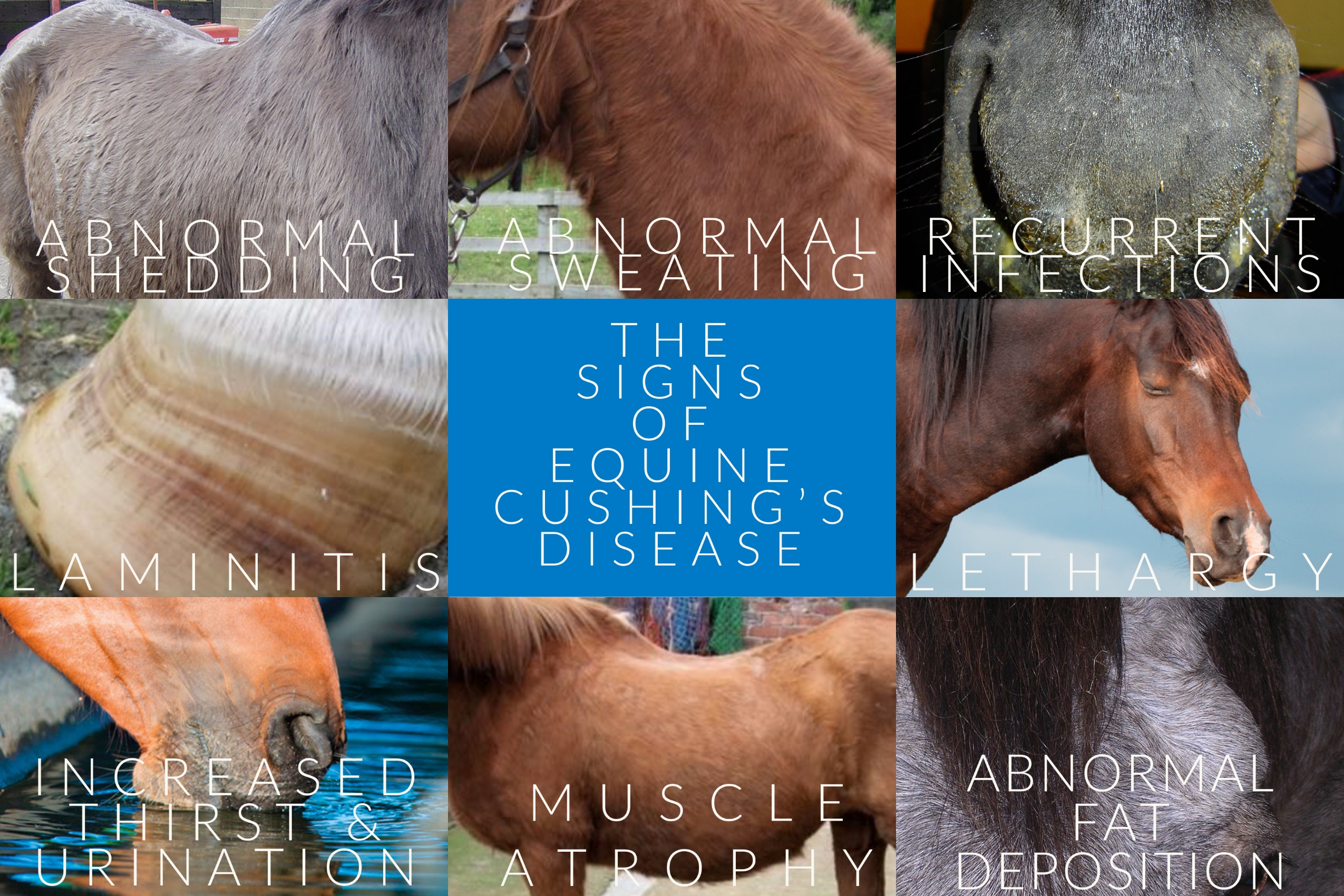Could your horse have Equine Cushing's disease?
10 Feb 2021 (Horse health news)

Equine Cushing's disease, also known as PPID, is thought to affect 20% of horses over the age of 15, and is the 5th most common disease syndrome recognised in horses and ponies in the UK*. It is a hormonal disease caused by changes in the pituitary gland, which is located at the base of the brain, and the symptoms are associated with high hormone levels.
It is important to recognise that Cushing’s is a progressive condition: this means that the initial signs that your horse may show (for example mild coat changes) might not be of significant concern, but over time the disease will progress and more severe symptoms will develop. Early identification and diagnosis will provide you with more options to keep your horse happy and healthy for as long as possible.
Equine Cushing’s disease will cause varying combinations of signs from one horse or pony to another, so it is important to monitor for all of the symptoms associated with this disease.
The early clinical signs are often overlooked or simply put down to ‘old age’. These include the development of a pot belly and loss of topline over the back - both associated with reduced muscle mass and strength. Other signs develop as the disease progresses, including an excessively long hair coat, (‘hypertrichosis’), and delayed or even absent seasonal coat moulting.
Equine Cushing’s disease is a common underlying cause of laminitis: in one study up to 70% of horses with laminitis were shown to have high levels of the hormone associated with this condition. It is thought that in many cases subclinical Cushing’s disease (when the disease is present but there are no obvious clinical signs) will have been present for several months or even years prior to laminitis developing. This means that recognising and treating the disease promptly may reduce the risk of laminitis developing in your horse.
If you spot any of the symptoms below in your horse, it is advisable to speak to your vet.

If your vet recommends a blood test to check whether your horse has Equine Cushing’s disease, they can claim a free* test on your behalf from the Care About Cushing’s campaign.
To perform this test your vet will take a blood sample from your horse and send it to a laboratory that will measure the levels of a hormone called ACTH. The results of the test will then be compared to reference ranges (which change with the seasons) to confirm the presence or absence of Equine Cushing’s disease.
The measurement of serum insulin and glucose is often recommended alongside the basal ACTH test: These tests help to differentiate Equine Cushing’s disease from Equine Metabolic Syndrome (EMS) (another common hormonal cause of laminitis), and also act as an indicator of laminitis risk.
